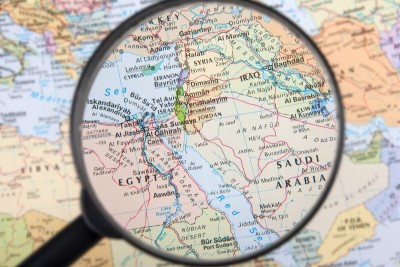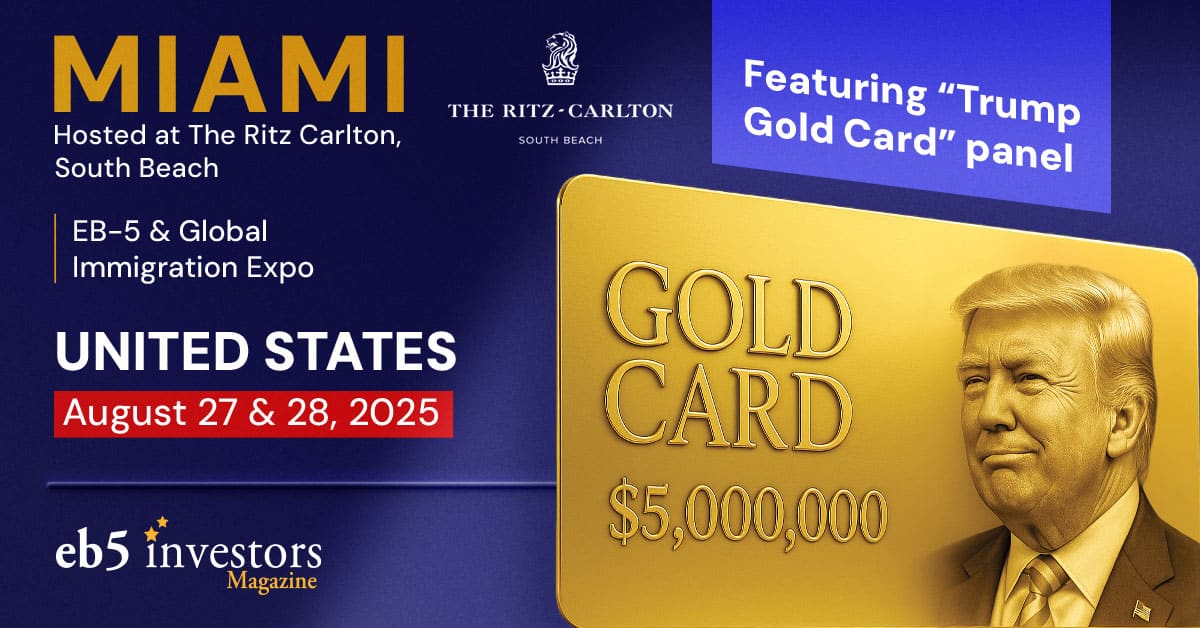
The Middle East/North Africa (MENA) region typically consists of Algeria, Bahrain, Egypt, Iran, Iraq, Israel, Jordan, Kuwait, Lebanon, Libya, Morocco, Oman, Qatar, Saudi Arabia, Syria, Tunisia, United Arab Emirates, and Yemen.
This region has steadily grown to be a strong EB-5 market, widely considered by many high-net-worth individuals (HNWI) based in MENA as the most feasible and flexible means to obtaining a green card.

EB-5 visa statistics for MENA nationals
EB-5 issued visas to MENA investors totaled 988 in 2022, according to the U.S. State Department’s Report of the Visa Office. Of this total, 30 come from African countries (accounting for the region’s 15% of issued visas) and 958 from Middle East countries considered for this region. Investors from Egypt (25) and the United Arab Emirates (815) led the number of visas issued.
The 2022 figures contrast strikingly with 2021. EB-5 visas issued to MENA countries totaled 60 that year. The MENA African investors accounted for 63% (12) of the granted visas while MENA Middle Eastern nationals concentrated 2,46% (48) of the total visas issued.
Previous reports show the first significant surge in the number of EB-5 petitioners based in the MENA region was in 2015, potentially due to the announced expiration date for the program that year. With the new approach to processing visas and the revised minimum investment amounts announced in 2019, the first quarter of FY2020 witnessed the second-highest number of EB-5 application submissions from the region since 2015.
In FY2020, due to the impact of the COVID-19 pandemic, USCIS’s productivity in completing I-526 cases remained at a low level compared to recent years. As for the I-526 approval rate, the agency hit the lowest level in the last eight years.
Knight Frank’s The World Wealth 2023 report shows that there were 69.5 million high-net-worth individuals and 579,000 ultra HNWIs in 2022, up 2.9% and down 3.8%, respectively, compared with the previous year. Meanwhile, the UHNWI population grew 16.9% in the Middle East in 2022, sustained by the UAE’s and Saudi Arabia’s leading economic and property market performance, and 6.3% in Africa.
And this number of wealthy individuals is expected to continue, particularly in the Gulf Cooperation Council (GCC) sub-region. “We see the Middle East and Africa financial wealth growing year after year, with the GCC, in particular, excelling, despite a tremulous global market,” said Mustafa Bosca, Managing Director and Partner at Boston Consulting Group.
Of these global UHNWI, 13% are looking for a second passport, according to the report – of that demographic, 12% are from Africa and 11% from the Middle East.
Why is EB-5 popular in MENA?
Whilst some countries in the Gulf area prohibit dual citizenship, many wealthy individuals from MENA turn to U.S. immigrant visas to expand their worldwide mobility and to have access to a more stable living and working environment as opposed to the geopolitical issues the region is frequently faced with.
As for the EB-5 investment options, the regional center route makes up many of the investments from the MENA region.
Special benefits or challenges facing Middle Eastern/North African petitioners
Despite the growing popularity, MENA countries still submit a relatively low number of EB-5 petitions compared with other regions each fiscal year, which could prove beneficial for petitioners due to the country-availability approach to processing applications.
However, the region does not enjoy the presence of a formal agency system, and established EB-5-specific agents are somewhat scarce. This can pose a challenge to potential investors from Middle Eastern and North African countries, as due diligence is an important process of the EB-5 application.
Source of funds issues for Middle Eastern/North African nationals
In many MENA countries, hawala (an informal means of transferring money based on social connections and trust) is common practice; in some jurisdictions, the system is regulated and licensed. However, petitioners who would like to transfer their EB-5 funds through hawala are advised to handle their source of funds process with extreme caution, providing proof of source of funds for each step of the transaction.
Also, the Office of Foreign Assets Control (OFAC) of the U.S. Department of Treasury may have sanctions programs in place for MENA petitioners’ native countries. It historically posed a challenge for Iranian and Syrian petitioners, who were required to secure a license from OFAC before investing in the EB-5 visa.
What is the current retrogression situation?
Currently, none of the countries in the MENA region are facing retrogression. In the history of the EB-5 program, backlogs have not been an issue in MENA countries, and the status quo in this regard is not expected to change in the near future.
What does the future hold for Middle Eastern/North African EB-5 investors?
Although FY2020 was not a very productive period in the global EB-5 space with only 114 I-526 petitions approved through Q2, Q3, and Q4, some countries from the MENA region—most notably Iran—still displayed remarkable growth in the number of visas issued compared to the previous year. While Iran, UAE, and Egypt stood out as 2020’s strongest players in the EB-5 market in MENA, it was possible to see an uptick in the number of visas issued in other countries like Algeria, where the EB-5 program hadn’t historically drawn much attention.
This, paired with the 2022 figures, may signal a powerful potential in the region that can benefit EB-5 professionals and investors alike.
Interested in applying for the EB-5 visa? Take our free evaluation.






